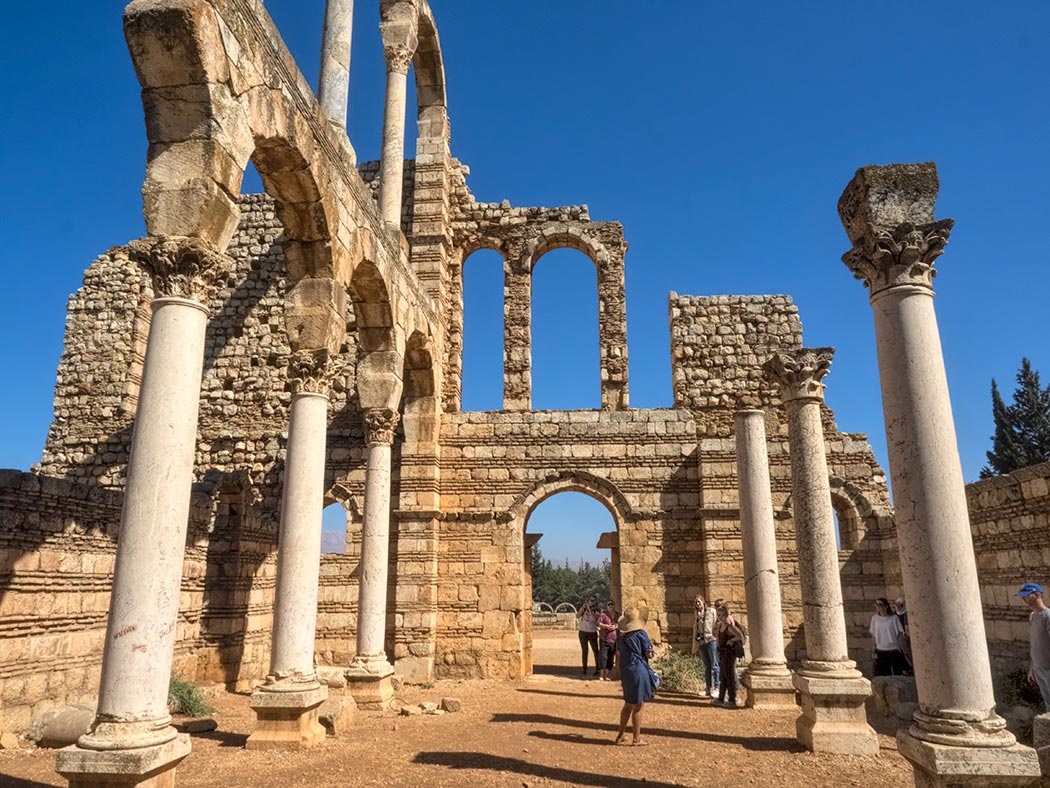This large palace is one of the more impressive structures at the Umayyad archeological site in Anjar, Lebanon. The settlement, which was founded at the beginning of the 8th century, is located in the Beqaa Valley (sometimes written as the Bekaa Valley). Though today it is a dusty backwater, in its heyday Anjar was an important commercial center that sat at the crossroads of two important trade routes. The original city was completely surrounded by walls that incorporated forty watch towers. In addition to the large palace, the city had a Grand Mosque, public baths, and a small palace where the Caliph’s harem was housed.
Ancient Anjar existed for only a moment in time. The city was abandoned in 744 AD after it was invaded and partially destroyed. But the short life of the site is what makes it so interesting to archeologists. Because it was so quickly abandoned, Anjar constitutes an outstanding example of 8th century town planning under the Umayyad caliphate, and for this reason it was awarded UNESCO World Heritage status in 1984.


Thanks for giving such a wonderful information. It is very helpful.